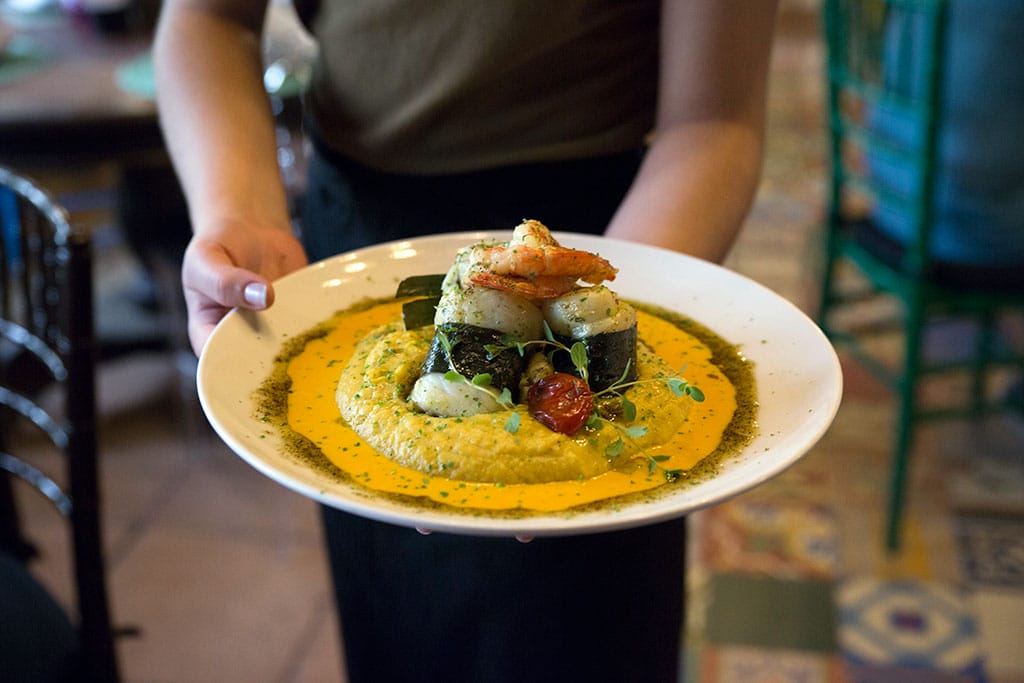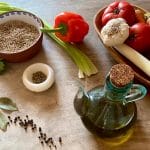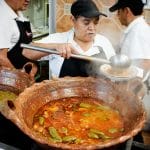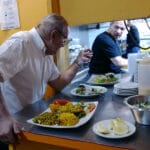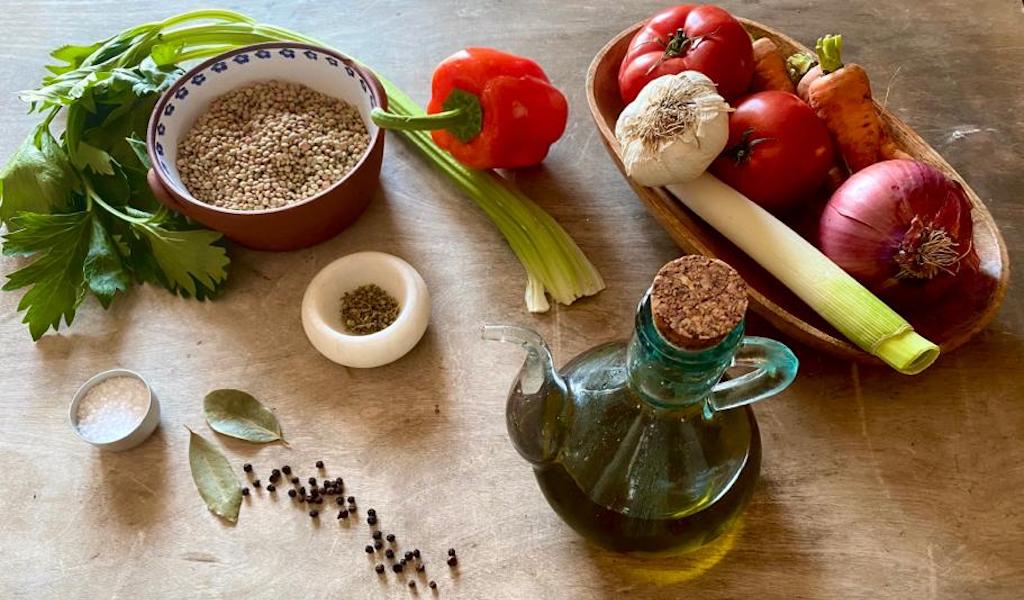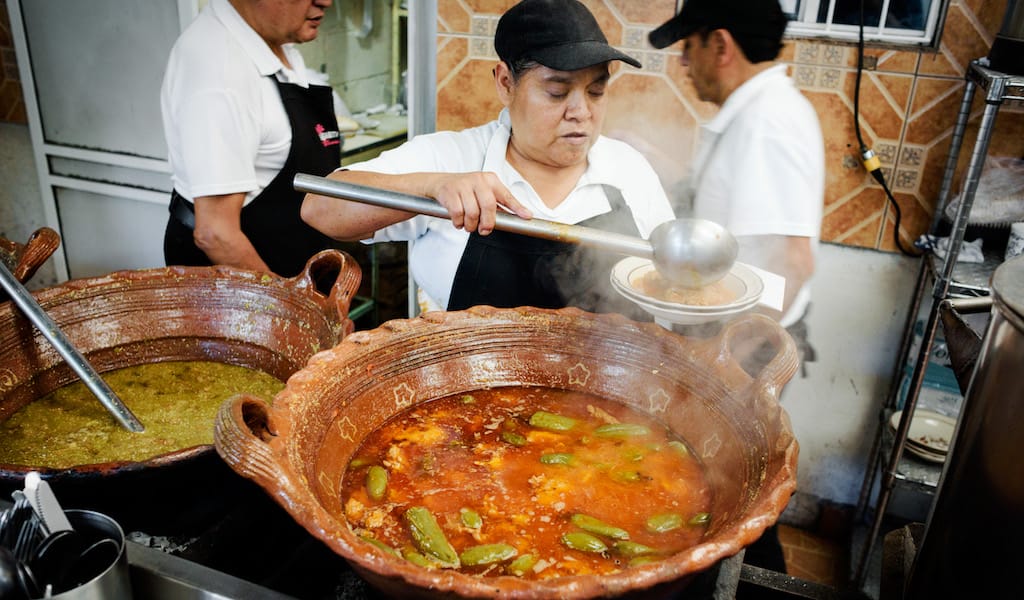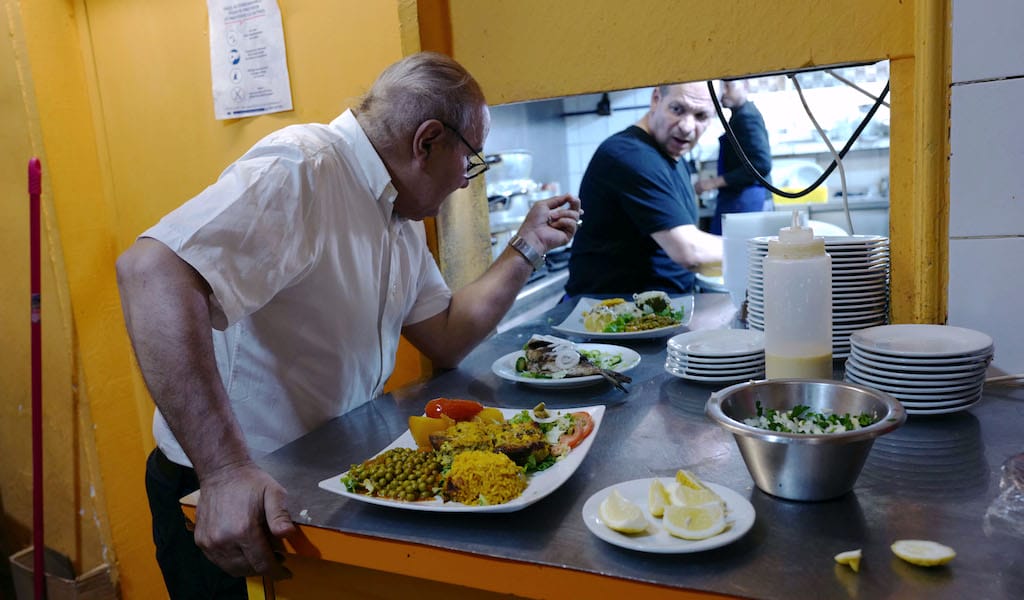Editor’s note: As Rio gears up for the 2016 Summer Olympics, CB has been exploring the backstreets of the city’s Olympic Zones in search of gold-medal eateries. This is the first dispatch in the series.
Barra da Tijuca was meant to be the best of Rio without its worst. Sandy beaches with no pickpockets. Top-notch shopping with no annoying squawking vendors. Playgrounds with no worrisome outsiders – because those playgrounds are inside gated condominiums with guards who sometimes have pistols tucked into their belts. The Avenida das Américas is 14 lanes wide, enough space for everyone to have their own car and leave the bus lanes to the white-uniformed maids and servicemen and women who bustle into Barra each day.
Barra da Tijuca runs along a pretty 17 miles of beach, and the neighborhood’s towering condominiums and extraordinary number of shopping malls make it the anchor of the city’s West Zone. One even has a Statue of Liberty replica at its entrance as tall as the mall itself. This is the city’s newest region, taking the form it has today as Rio expanded westward over the past three decades. And another tectonic urban shift is underway: This is the region where the Olympic Park and the 30-some towers of the “Pure Island” (we’re not being snide – that’s the new development’s unironic tribute to isolation) Olympic Village are going up, along with a series of new transit projects meant to bring guests and new residents here during the Summer Games in 2016 and beyond.
But Rio being the lush and exotic city it is, an urban life more native found its rightful existence sprouting through the cracks of the concrete city-within-a-city, that tropical metropolis being one that could never flee from its exuberant nature even if it wanted to.
 You’ll be greeted at the entrance to Chácara Tropical with the pleasant smell of fresh-turned earth and whatever’s blooming these days, which, when we visited, was baby pink hydrangeas, red poinsettias and yellow, purple and white orchids. It’s a garden center with 3,000 square meters of horticultural delights, all nestled between a golf club and the hiker-friendly Pedra Bonita (go paragliding here) and Pedra da Gávea (work up an intense sweat reaching the high stone plateau here). A short drive past the golf course, well out of view from the beach, is one of the West Zone’s most prominent favelas, called Rio das Pedras. Here at the Chácara, which will turn 50 the year Rio hosts the Olympics, you can get your small pots of basil and rosemary or entire small palm trees for your home.
You’ll be greeted at the entrance to Chácara Tropical with the pleasant smell of fresh-turned earth and whatever’s blooming these days, which, when we visited, was baby pink hydrangeas, red poinsettias and yellow, purple and white orchids. It’s a garden center with 3,000 square meters of horticultural delights, all nestled between a golf club and the hiker-friendly Pedra Bonita (go paragliding here) and Pedra da Gávea (work up an intense sweat reaching the high stone plateau here). A short drive past the golf course, well out of view from the beach, is one of the West Zone’s most prominent favelas, called Rio das Pedras. Here at the Chácara, which will turn 50 the year Rio hosts the Olympics, you can get your small pots of basil and rosemary or entire small palm trees for your home.
In 2008, Gaúcho Zuma Fleischmann – his last name means “butcher,” which he finds appropriate, since he’s from Brazil’s south and studies cuts of meats with an assiduousness you may not infer from his otherwise skater-y tattooed appearance – was invited to open a gourmet bistro inside the Chácara. Under its charming thatched palm leaf roof, Fleischman fires up his wood stove for a lenguado ao thermedor, a rich white fish wrapped in banana leaves and topped with fat, chewy shrimp, all served on a bed of thin, sweet banana purée and saffron cream.
Brazilians love palmito (heart of palm), and Fleischmann’s is one of the best we’ve had in this city. Its thick white stalks are savory and steaming in a small ceramic pan with punchy Parmesan, arugula and Brie cheese.
He calls his lenguado “light” – in his native Rio Grande do Sul, he says, unlike the fitness- and bikini-buff cariocas, the locals pack in calories for those cold winter months. We questioned his caloric parameters and had difficulty finishing even what looked to be a modest portion of risotto with varied mushrooms. The latter were nicely chewy and had a flavor that felt close to the source, as though a tribute to the earthiness that surrounded us as diners. In a city eager to pave over and commercialize its verdant spaces, we’ll take that flavor and a deep whiff of the fresh dirt that surrounds us as a nod to a Rio that happily owns its natural roots.
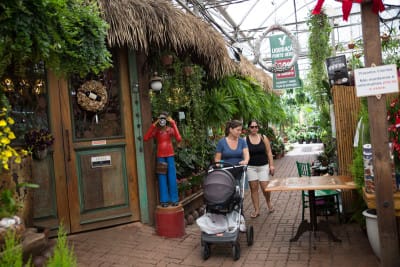 There’s one thing that’s not so native about the Chácara: Reservations are required. Chácara Tropical expects promptness and will give away your table if you’re late, even if you arrive within the short amount of time that would otherwise be considered well within carioca standards of tardiness.
There’s one thing that’s not so native about the Chácara: Reservations are required. Chácara Tropical expects promptness and will give away your table if you’re late, even if you arrive within the short amount of time that would otherwise be considered well within carioca standards of tardiness.
Published on December 29, 2015
Related stories
April 14, 2020
AthensThis year Greek Easter will be celebrated a week later than Catholic Easter. I guess “celebrated” might not be the right word, as everything – for the first time in recent history – will be shut, even the churches. In Greece, Easter is as important as Christmas. If they can, most Athenians leave the city to…
February 22, 2020
Mexico CityWith a simple façade, the unassuming Fonda Margarita sits next to a carwash and wouldn’t attract much attention if it weren’t for the line out the door and around the block by the time it opens at 5:30 a.m. Construction workers come at the crack of dawn, office workers arrive in shifts and sleepy teenagers…
September 7, 2022
Marseille | By Jenine Abboushi
MarseilleThe walk to Sur le Pouce, a popular Tunisian family restaurant, is a straight shot from Marseille’s central boulevard, La Canébiere. We make our way along rue Longues des Capucins, behind Alcazar, the main public library, pass the Chinese wholesale clothing stores – Joy Lady, Wei Wei, and New 35 – and arrive ten minutes…







































